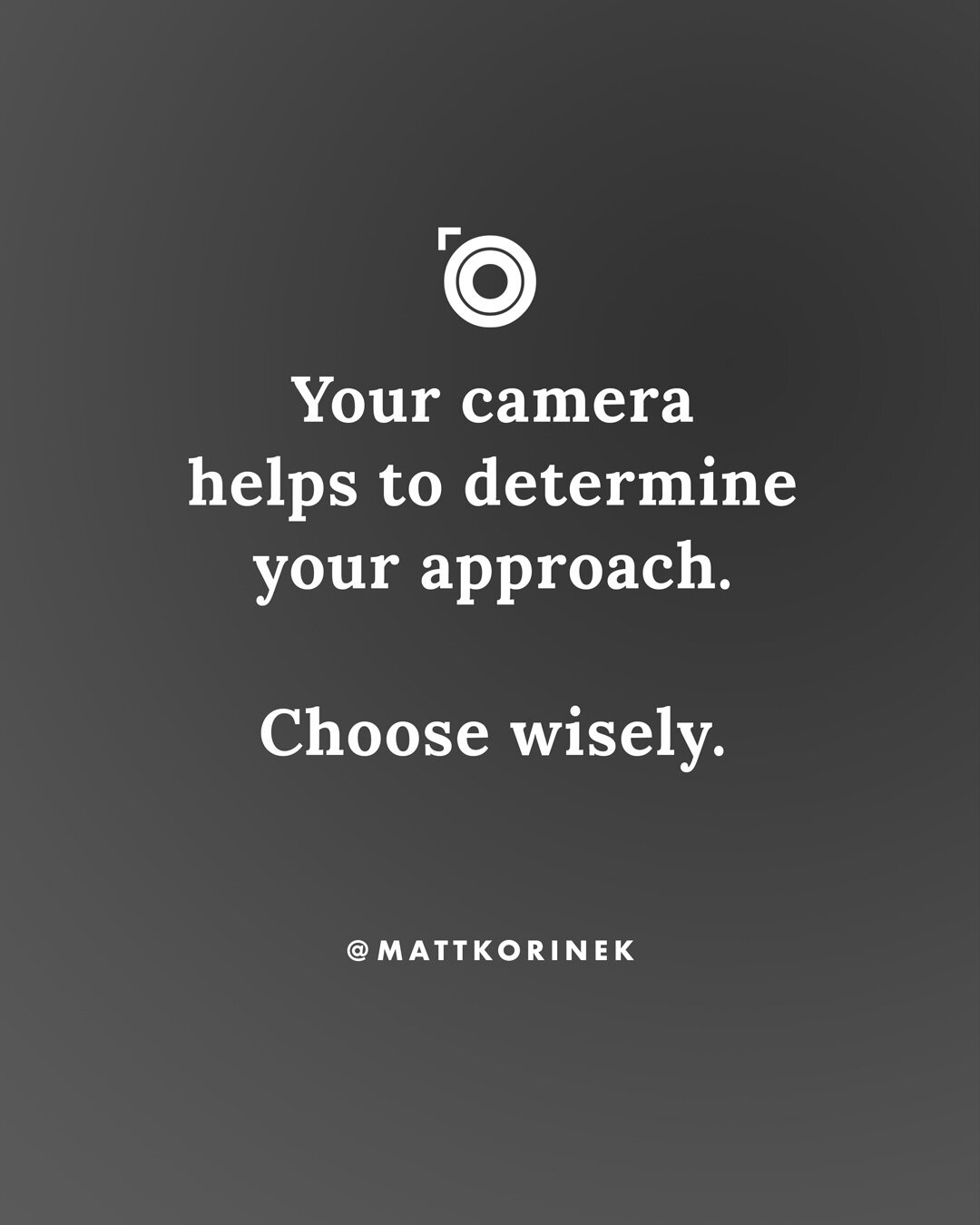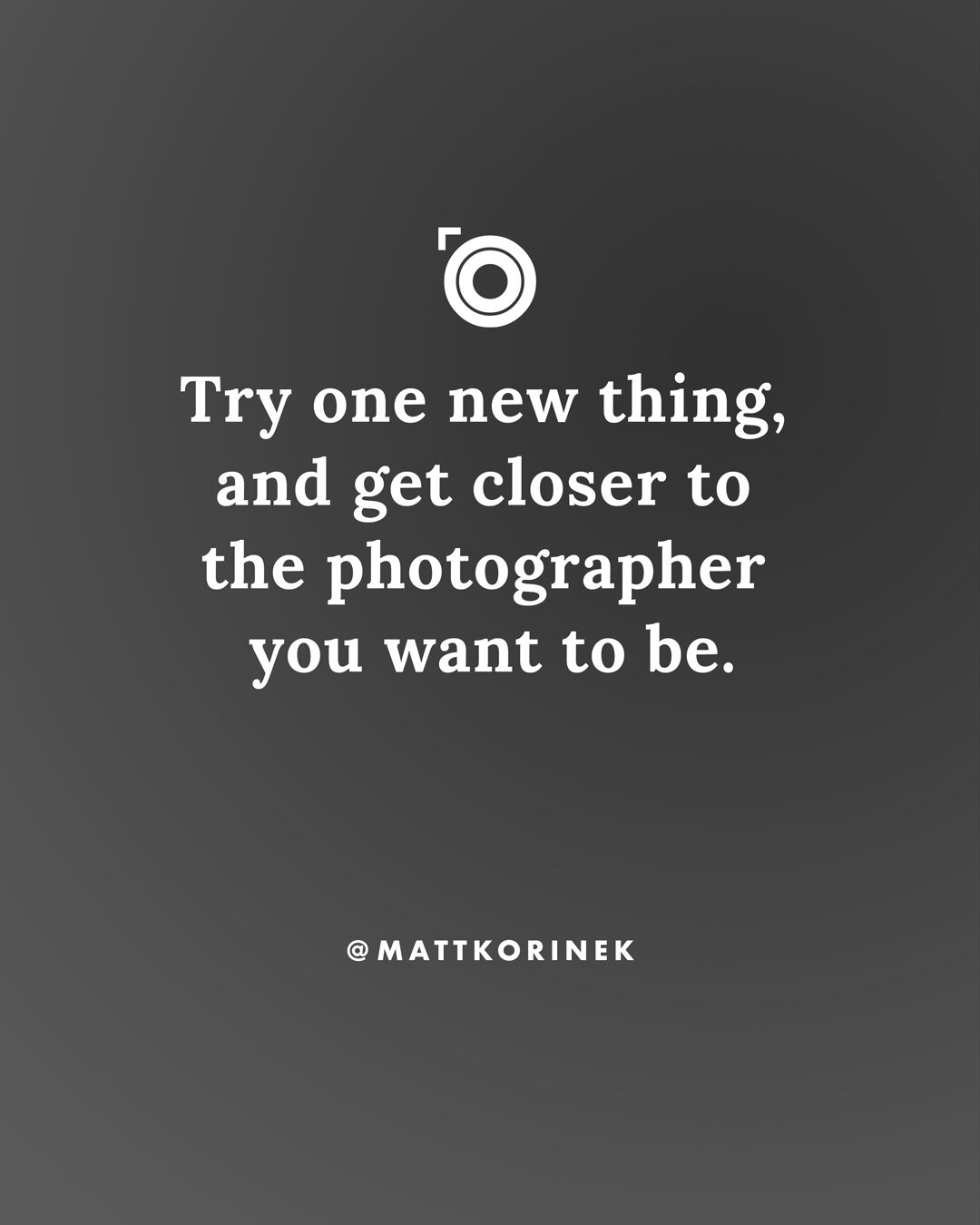Episode 02 - Gear DOES matter (just not the way you think)
Audio:
Shownotes:
Examples of Waist-level finders.
Actions from this episode:
Try a new approach:
Turn off image review on your digital camera, or cover it with something so you can’t chimp.
If your camera has a tilting or articulating LCD screen, use it like a waist-level finder.
Change how quickly your camera shoots. If you shoot quickly, turn it to one-shot mode.
Run and gun shooter? Stick your camera on a tripod and focus on connecting with and directing the talent.
Tripod shooter? Get yourself off the tripod and play with angles and compositions.
Borrow a friend’s camera and see if using it impacts your approach
Think about your current approach and how it impacts your aesthetic.
Episode Cards:
DOWNLOAD PIN & SHARE
Episode Transcript:
How many times have you heard a photographer say gear doesn't matter? Well, I'm here to tell you that it does, but maybe not the way you think. Hey, it's Matt, and this is the Photo Proventure Vlogcast.
[SONIC BRANDING AND OPENING MUSIC]
So this is not going to be about comparing or trashing different brands. This is really about the bigger families of gear that are out there and how the gear you choose will impact your final results.
And for me, this all starts with ergonomics. And ergonomics is just how you interact with your camera in order to take pictures. So things like where are the dials and the buttons and how many are there and what are the settings and how can you access them quickly? Does the camera get out of your way so that you can focus on what you're actually shooting or does it get in your way. What creative constraints does the camera system you choose introduce?
And because ergonomics impacts how you take images, it's going to impact your approach. And your approach is really the difference maker, because your approach will impact what your images actually look like, which means they impact the aesthetics.
So let's talk about a few examples. Of how ergonomics impacts your approach.
First thing we're going to talk about is waist level finders versus eye-level finders. Now, most of the cameras we see today are eye-level finders, so it means you hold the camera up to your eye. But waist level finders, you can't really do that because you can't see what you're taking a photo of. Waist level finders are meant to be used at your waist or at the very least right under your chin because you're going to look down at the thing that you're framing.
Now, there are ways of getting the waist level finder experience in today's cameras, if that camera has something like a display that's articulating or that's tilting. And so one of the things you can try is using that exclusively. So stop yourself from using your eye level finder and force yourself to use a tilting screen down here at your waist.
And what I think you'll find is it changes your images in a couple ways. The first and most obvious way is the angle that you're taking the photo of. If you're one of those photographers who always has your camera up at your eye, it means that you're going to be viewing the world from the height that you are.
A waist level of finder halves that. So suddenly if you're six feet tall, you're probably looking at the world from three to four feet. With a waist level of finder, and that's going to impact the angle that you view your subject. So if it's another human being, it will probably mean that they look more heroic because you're looking up at them, especially if they're standing.
If it's a child, it means you're going to be more at their eye level because they're about that tall. And in general, it makes it easier to do any of those low angles than an eye-level finder would. Because if I want to get those angles with an eye level finder. It means I'm going to have to bend down or lie on the ground.
Certainly it's possible, but it will have a different experience. Your subject will look at you differently if you're lying on the ground than if you're just holding a camera lower than usual.
You'll also find that because you're looking down, it appears like you're paying attention more to your camera than to the subject, which will probably impact how they react to you. When you have a camera up to your eye and you're talking to them, they know the eye of the lens is staring right at them. But when you're looking down, you might find that people are a little bit less thrown off. They're a bit more comfortable because in their mind they think, "Oh, well, the photographer is just looking down." When you're really looking at them, it just makes them maybe a little bit more comfortable.
It also means that if you engage with them in conversation, they're going to be looking above the camera probably at you. Which can help for some of those candid moments and make it less obvious that the photographer was there.
I think this is why waste level finders were so popular in certain types of street photography. It meant that you could frame up your shot ahead of time and then look up and wait for a subject to cross through it. It means that those subjects weren't really aware that you were taking photos.
You could just be standing there with your camera at your waist and you're waiting and someone walks through. And click. You take that photo.
Another thing is auto-focus. Now, you don't really have cameras today that come just manually focusing. For that you'd have to go into older cameras. And don't get me wrong, autofocusing is great, but it also changes your approach.
Because if you're manually focusing your camera, you're going to be thinking a little bit more about your focus, where it is, how you're framing, it's going to slow you down. Which can be really problematic with some things.
So if I was taking pictures of birds in flight, or a dog or children running around, manually focusing on them might actually keep me from capturing those really beautiful, authentic, candid moments.
But maybe if I'm trying to do a style of photography that needs a bit more thought, whether it's fine art, whether it's street photography or even formal portraiture. Having manual focus will make me think more. It will slow me down. And slowing down can sometimes help you see the world in a different way.
The other thing that these digital SLRs have that have these really great autofocus is really high frame rates. So you can take upwards of 14 to 16 frames a second, which can be really great if you're a sports photographer and you're trying to capture the wonderful moment of when someone scores the game winning touchdown.
That moment might be harder for someone shooting film to get. I mean they'll get it, but they might get one really good option, whereas you might get 10 options and you might still get the exact same really good one. And because you're shooting digitally, you know that your settings are more correct.
Whereas with a film camera, you don't even know if that shot worked. You don't know if it was impacted by something else, cause you can't check it.
And so there is another one of those things that impacts your approach, which is chimping. Do you look down at your camera and look at the shots you just took?
There's something really great about that because it means you're learning in real time and you can tweak things and you can really tailor the final result. But the negative side of that is that you lose connection with your subject because you're looking down instead of interacting with them. You're getting your head about how to fix something rather than just going with the flow.
So sometimes if you're a really great photographer, film can allow you to build a different sort of trust. Because the subject, you can't show them, "Hey look, this is how good the photos are that we're taking." They have to trust you. You have to show them through who you are being and how you interact with them, that you're someone to be trusted.
And finally, just even size can impact how you approach something. Big cameras like large format and medium format cameras are so heavy that they can stop you from shooting a particular way. They might end up getting you stuck on a tripod, but maybe your style is better because you're stuck on a tripod.
If you're stuck on a tripod, suddenly you're not paying attention to how the angle is changing. You're paying attention only to what your model is doing in the frame. And so sometimes when you're stuck to a tripod, it will impact how you interact with a person because you can't rely on moving the camera really quickly to get different angles.
[TIME TO TAKE ACTION MUSIC]
So think about when you're buying gear or when you're trying new gear, how does it impact your approach and what are the things that you can do with your current gear to play with your approach to maybe get new results.
So can you cover the back screen so that you chimp less.
Can you use an articulating or a tilting screen to make it seem like a waist level finder?
Maybe you change how quickly your camera shoots, so it only takes one frame at a time and not five frames per second.
And maybe you stick yourself on a tripod and focus on how to get a model to move the way you want them to and not even worry about what angle you're getting.
Finally, if you have a friend who's a photographer who has a different camera than to what you're used to ask them to borrow their camera. Maybe by shooting what they shoot with, you'll find that you get different results than what you're used to.
But what I really encourage you to do is think about your approach, because great photos aren't necessarily about how many megapixels you have. So gear doesn't matter in that way, but it does matter in terms of what it opens up for you and what it closes. Photography is all about creative constraints.
So sometimes when you have a prime lens, that constraint that you can't zoom in or out is going to help your photography. And sometimes it'll hinder it.
The fact that you can shoot 14 frames a second will sometimes help your photography and sometimes it'll hinder it.
And so figuring out what you want to shoot and how you want to shoot it, you can then look at the ergonomics of a camera to figure out.
What camera is the best for you.
So try something new and get closer to the photographer. You want to be.
[CLOSING MUSIC]




